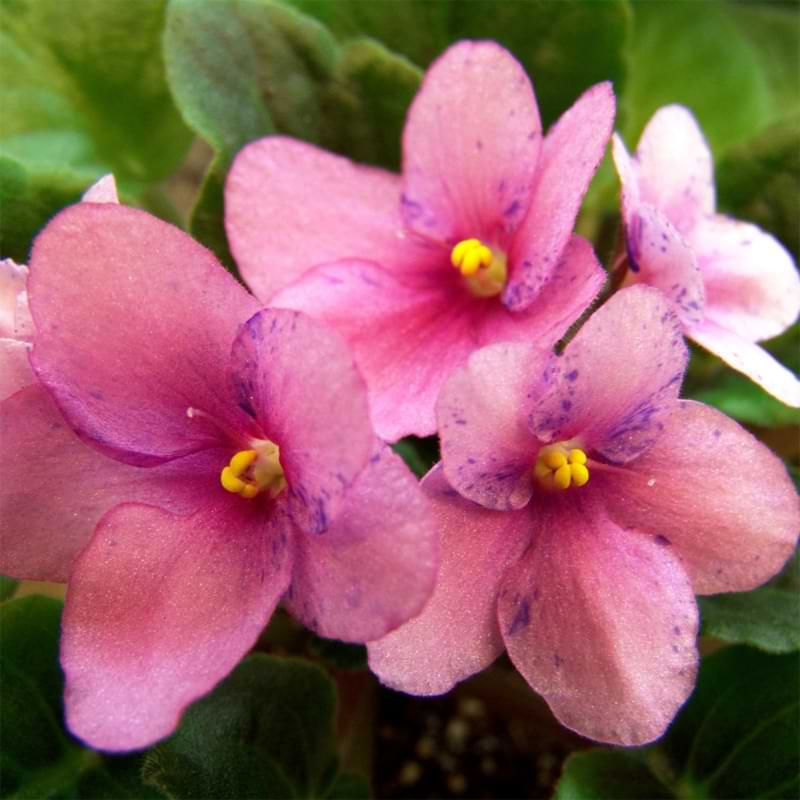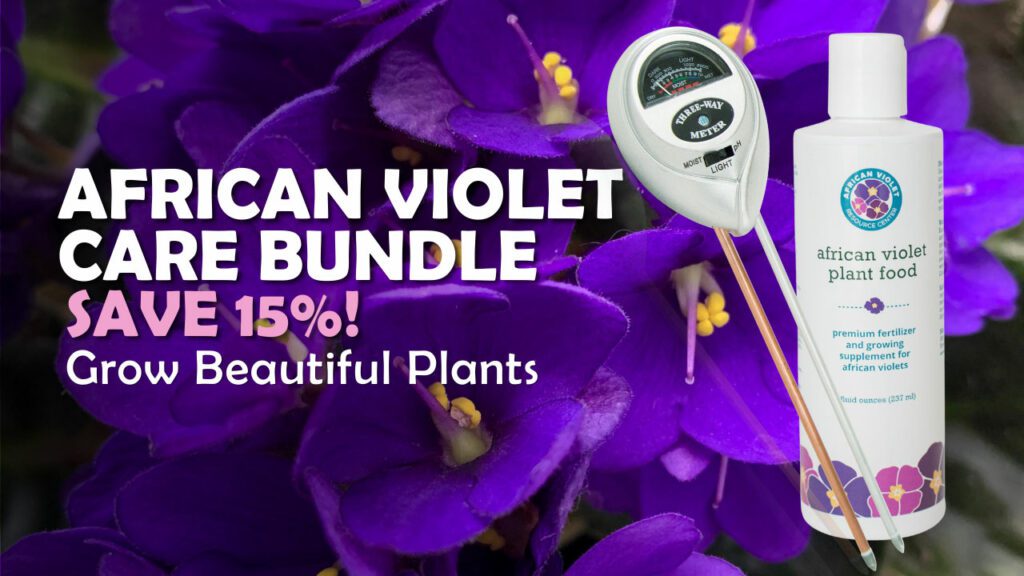Are you ready to take your love for African violets to a whole new level? If so, get ready to dive into the fascinating world of hybridizing these beautiful plants! Hybrid African violets are the result of crossbreeding different varieties, and they offer a unique opportunity to create your very own stunning blooms. Whether you’re an experienced gardener or just starting out, you’ll be able to follow these simple stepson how to hybridize African violets.
What is a Hybrid African Violet
What exactly is a hybrid African violet? Well, simply put, it’s a plant that has been created by crossbreeding two different varieties of African violets. The goal of hybridization is to combine the desirable traits of each parent plant, such as color, shape, and size, in order to create a new and unique offspring.
Top Tips Before You Start Cross Breeding
Before you embark on the exciting journey of hybridizing African violets, there are a few important tips to keep in mind. These tips will help ensure that your cross breeding efforts are successful and yield beautiful, unique varieties.
Tools and Equipment
Having the right tools and equipment can make all the difference anytime you are caring for a plant. Here are a few essentials that will help you on your journey to creating beautiful new varieties:
- Tweezers or fine-pointed forceps: These handy tools will allow you to carefully manipulate the delicate blooms without causing any damage.
- Small paint brushes: You’ll need these for transferring pollen from one flower to another during the pollination process. Opt for brushes with soft bristles for gentle handling.
- Clear plastic bags or covers: These are necessary to protect the flowers after pollination, preventing unwanted cross-contamination.
- Labeling materials: It’s crucial to keep track of which plants you’ve crossed and when. Use labels or markers that won’t fade over time.
- Sterilization supplies: Maintain cleanliness by using alcohol wipes or sprays to sterilize your tools before each use. This helps prevent any potential contamination between plants.
Remember, investing in quality tools will ensure accuracy and precision throughout the hybridization process.
Timing
Timing plays a crucial role in the process of hybridizing African violets. To successfully crossbreed these beautiful plants, it is important to understand the right time for pollination and seed collection. The ideal time to pollinate is when the flower has fully opened and its stamens are visible. This usually occurs around mid-morning or early afternoon. Be sure to choose healthy flowers with vibrant colors for the best chances of successful hybridization.

How To Crossbreed African Violets
Now that all the equipment is ready to go, it’s time to get started!
1) Selecting your Parent Plants
The process starts with carefully selecting the parent plants. This involves choosing varieties that have characteristics you want to see in the resulting hybrids. Maybe you’re looking for vibrant purple blooms or large ruffled petals – whatever your preferences may be, the possibilities are endless!
Depending on the type of plant you are working with, these traits could include color variations, flower shape, size, hardiness, and much more. It is also important to consider the environment in which the plants will be grown in order to make sure they are well-suited to their new home. You will also want to ensure that both parent plants are healthy and disease-free before beginning your breeding project.
2) Pollinating Your Bloom
Once you’ve chosen your parent plants, it’s time to pollinate the bloom. Pollination is an essential part of the flowering process. Without pollination, the flower can’t produce fruit and set seed.
Since you want a controlled pollination to ensure you’re hybridizing the right plants, you’ll want to take pollination into your own hands. This can be done by using a small brush or cotton swab to transfer pollen from one flower’s stamens (the male reproductive organ) onto another flower’s pistil (the female reproductive organ). It may take some patience and precision to ensure successful pollination.
After hand pollinating, cover the flowers gently with your clear bag or a simple mesh bag to ensure no additional pollination occurs with a different African Violet species.
3) Harvest Seed Pod
After pollination has taken place, a seed pod will begin to develop on the fertilized flower. This pod contains seeds that will eventually grow into new hybrid plants. When the seed pod is mature and begins to split open naturally or turn brownish-green in color, it’s time for harvest. Carefully cut them off with a pair of scissors or pruning shears. Place the pods in a paper bag or on a sheet of newspaper and store in a cool, dry place until ready to use. They should stay viable for up to a year, but who wants to wait that long to see your brand new hybridized African Violet?
4) Collect Seeds
To get the seeds out of the seed pod when you’re ready for them, gently hold the pod and roll it in your hands, looking carefully for the small seeds. These tiny treasures hold immense potential for creating beautiful blooms down the line, and you’ll want to collect as many of them as possible. To store the seeds outside of the seed pod, use a paper bag or a paper towel for more short-term storage.
5) Prepare Seeds for Germination
Before germination can occur, proper preparation of these precious seeds is necessary. Start by thoroughly cleaning them under running water while being cautious not to damage them during this process. Then soak them overnight in warm water.
After this, they are ready for planting! Follow these steps to plant your seeds and grow your new hybridized African Violet.
- Place seeds in a container with moist, but not soaking wet, potting soil.
- Cover the container with a lid or plastic wrap to keep moisture in and light out.
- Place the container somewhere warm, like on top of the refrigerator or near a heating vent.
- Check the soil daily to make sure it’s still moist and hasn’t dried out.
6) Wait for Seeds To Grow
Once your seeds have been planted, they’ll need time to germinate and grow. Depending on the type of seed, this could take anywhere from a few days to a few weeks. Keep an eye on your plants for signs of growth and water them as needed. Once they’ve grown to a certain size, you can transplant them into larger containers or into the ground if you live in the right environment.
7) Transplant Seedlings to Pots
Transplanting seedlings into pots is a great way to give them more space to grow. Before transplanting, make sure the seedlings have enough soil and water, and that the pot has adequate drainage holes.
Wait until the plants are a couple inches tall and wide before transplanting. This will give them a better chance of surviving the stress from being moved.
Once transplanted, water them thoroughly and give them plenty of sunlight. You can care for them just as a normal plant now, and as long as you keep up with their care, you’ll see the beautiful hybridized blooms in no time!
Common Problems
Despite having the best intentions and being careful in how you care for your plant, there might be some problems that come up during any of the steps to hybridize your African Violet. Here are just a few that you should watch out for.
Incorrect Pollination: This could potentially happen if the flower is pollinated by the wrong plant. While it’s not common, house pests like flies or even spiders could cause this to happen. The likelihood of this happening is very slim, but it is still a possibility.
To prevent this from happening, hand pollinate your flowers and cover them with either a plastic bag or a fine-mesh bag. Secure it around the bloom and you will be able to avoid this problem completely.
Poor Germination: African Violets can be difficult to germinate from seed, and may take several weeks or even months to sprout. If the environment is not kept properly moist, or the seeds are not planted deeply enough, they may not germinate at all.
Preventing poor germination is possible, but sometimes there is simply nothing you can do. The best plan of action is to stay patient and continue to care for the planted seed. Keep the seed planted with a plastic dome over it to mimic a greenhouse effect, and keep a close eye on the soil environment to make sure there is no sign of mold.
Temperature Fluctuations: African Violets require a consistent temperature in order to thrive. If the temperature fluctuates too much, it could shock the plant and cause it to die.
This should be a relatively easy problem to prevent. Keep the environment relatively stable for the plant, and keep the plant itself away from windows or air vents to prevent fluctuations in temperature. You can also keep a thermometer near the plant to monitor temperature levels easier.
Overwatering: Too much water can quickly kill an African Violet seedling as its roots are still quite delicate and cannot handle a lot of moisture yet. Make sure to keep the soil on the dry side until the plant has established itself and grown larger roots.
Overwatering is preventable, although it can be difficult to know when your little seedling is being overwatered. When plants are young, they are more susceptible to all potential problems, so it’s best to be more cautious when watering. Opt for giving your plant less water, but more frequently than giving it a big drink of water and letting it dry out before the next watering. Also, use a moisture meter to monitor the soil moisture levels.
Pests & Diseases: Aphids, mites, thrips, and mealybugs can easily damage a young seedling’s leaves and lead to stunted growth or death if left untreated for too long. Additionally, fungal diseases can quickly spread through damp soil and infect young plants before they have had time to establish themselves properly in their environment.
Preventing pests and diseases in your new plant can be done with daily monitoring. Inspect your plant daily for signs of any pests. Look for little dots on the underside of leaves, translucent webs that almost resemble spider webs under the leaves and where the leaf stem meets the main stem, and discoloration of the leaves. By looking for these problems every day in your plant’s young stage, you can catch a pest or disease problem quickly and take care of it before it kills your new plant.
Join the African Violet Club!
Whether you’re just starting out or are a seasoned grower, African Violet Resource Center has everything you need to help your plant grow vibrant and strong. Explore our other articles, visit our online shop, and connect with other houseplant lovers in our Facebook group to learn everything you need to know about this rewarding hobby!







